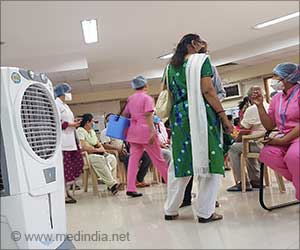The Ketan Desai-fuelled MCI scandal and the Ordinance signed by the President of India Pratibha Patil empowering the government to dissolve or reorganize the MCI have triggered debates regarding the establishment of an efficient medical regulatory body to carry out the functions hitherto executed by the Medical Council of India.
Established in 1934 under the Indian Medical Council Act, 1933 (now repealed), the Medical Council of India geared up remarkably to meet the challenges of rapid development in medical education in India, post Independence. The new Indian Medical Act was enacted in 1956 and further modified in 1964, 1993 and 2001.The Indian Medical Council's main objectives are to maintain uniform standards of medical education at the undergraduate and post graduate level, recommending the recognition/de-recognition of medical qualifications of medical institutions in India or abroad, maintaining a permanent registry of doctors with recognized medical qualifications and ensuring ethical practices in the medical profession.
Following the arrest of MCI President Ketan Desai on corruption charges and the President’s Ordinance, the government has formed an interim Board of governors headed by Dr. S.K. Sarin, Dept. of Gastroenterology, G.B. Pant Hospital, New Delhi, as a stop gap measure to carry out the functions of the MCI.
MCI’s Credibility Dips
Central Bureau of Investigation (CBI) arrested MCI’s President Ketan Desai, on charges of seeking a 2-crore bribe for granting recognition to a private medical college in Punjab. For Ketan Desai this is a repeat—he was convicted for corruption and removed from his office as MCI’s President in 2001 when the Delhi High Court observed that the MCI was “a den of corruption.” Highlighting the MCI’s shortfall in another area, the Estimates Committee of 2005 has noted that the MCI has bungled the maintenance of the Indian Medical Register (IMR) resulting in a faulty list of medical practitioners in India after 1993.
Medical Education—Tug of War
The onus of overseeing medical education in India continues to be a bone of contention between the government of India’s Health Ministry and Human Resource and Development (HRD) Ministry. In June last year, the President of India had announced that both the proposed National Commission for Higher Education (NCHER) and the National Council for Human Resources in Health (NCHRH) would function under the purview of the Health Ministry. The recent draft of the (NCHER) Bill proposes to bring medical education in India under the purview of the Union Human Resource and Development Ministry. The Health Ministry however, is keen on retaining medical education under its wing— NCHRH.
With private parties setting up medical colleges as business ventures and given the green signal by a corrupt medical council, the standards of medical education in India will be diluted with the system churning out substandard doctors who can ‘buy’ a medical degree. But dismantling an expert autonomous body like the MCI in haste for the sins of a few corrupt members is seen as an extreme move by many, including the Indian Medical Association (IMA) which has strongly opposed the government’s decision to dissolve the MCI. The greater fear is that the medical regulatory body’s responsibility in the hands of bureaucrats could make matters worse. According to experts, corrective measures, proper checks and balances within and outside the MCI, ensuring sincere, efficient and public-minded healthcare professionals are at the helm will restore dignity to the MCI and enable it to function in a clean, transparent and accountable manner.
MCI Crisis-What Next?
India has produced some of the most skilled doctors in the world and the current MCI crisis has to be resolved quickly and effectively to restore credibility to Indian medical education and practice in the eyes of the world. Despite the shame, the MCI crisis has finally made it imperative to overhaul the system that dictates one of the largest healthcare services in the world. Healthcare in India has huge gaps with shameful incidences of ‘medical negligence’ and rampant corruption hampering effective healthcare delivery to India’s huge population.
The cloud over the medical system in India has come at a time when Medical tourism is picking up in India and attracting patients from around the world seeking relief from chronic ailments. Cost effective expert treatments in modern medicine and alternative therapies are the pride of India, in addition to world class hospitals equipped with medical experts and state of the art equipment and facilities for accurate diagnosis and treatment of various diseases and disorders. Hopefully, the meeting scheduled at the end of this month by the Health ministry and HRD ministry to set things right should bring a favorable decision to end the turmoil kicked off by Ketan Desai and his partners in crime.
While it is imminent that medical education in India will be de-linked from the Medical Council of India’s purview, the fate of the once exemplary apex body for doctors and medical students in India now hangs in balance. After the Ketan Desai fiasco that tarnished the image of the Medical Council of India the one question that looms large is, “What next?”
Source-Medindia
Thilaka Ravi/L





